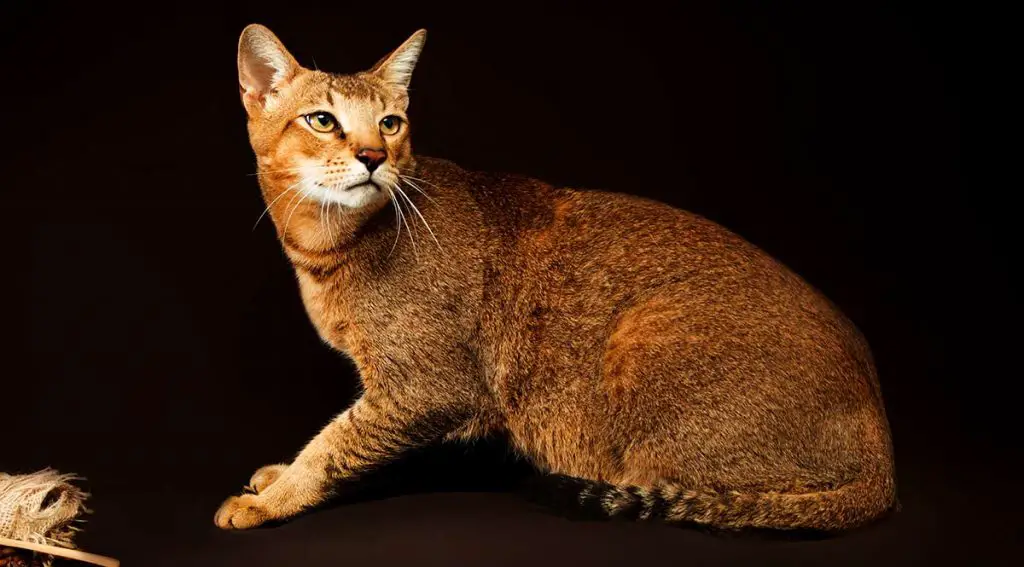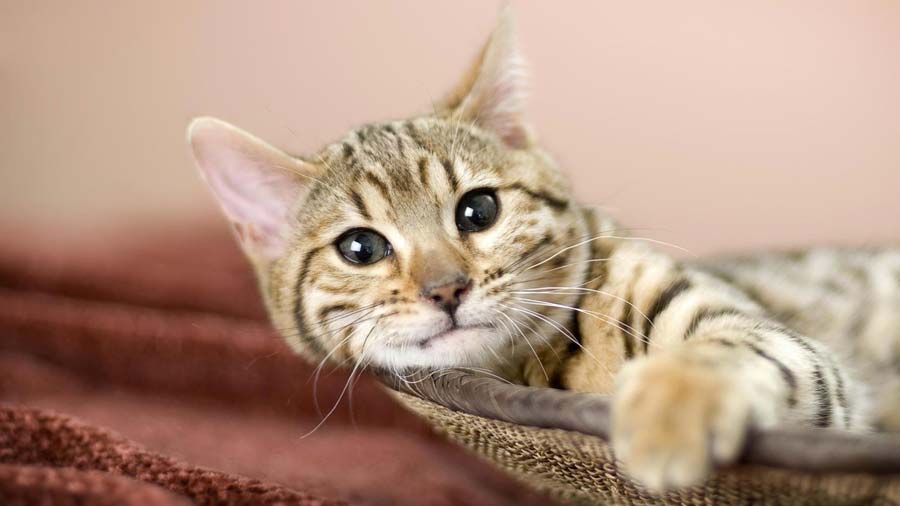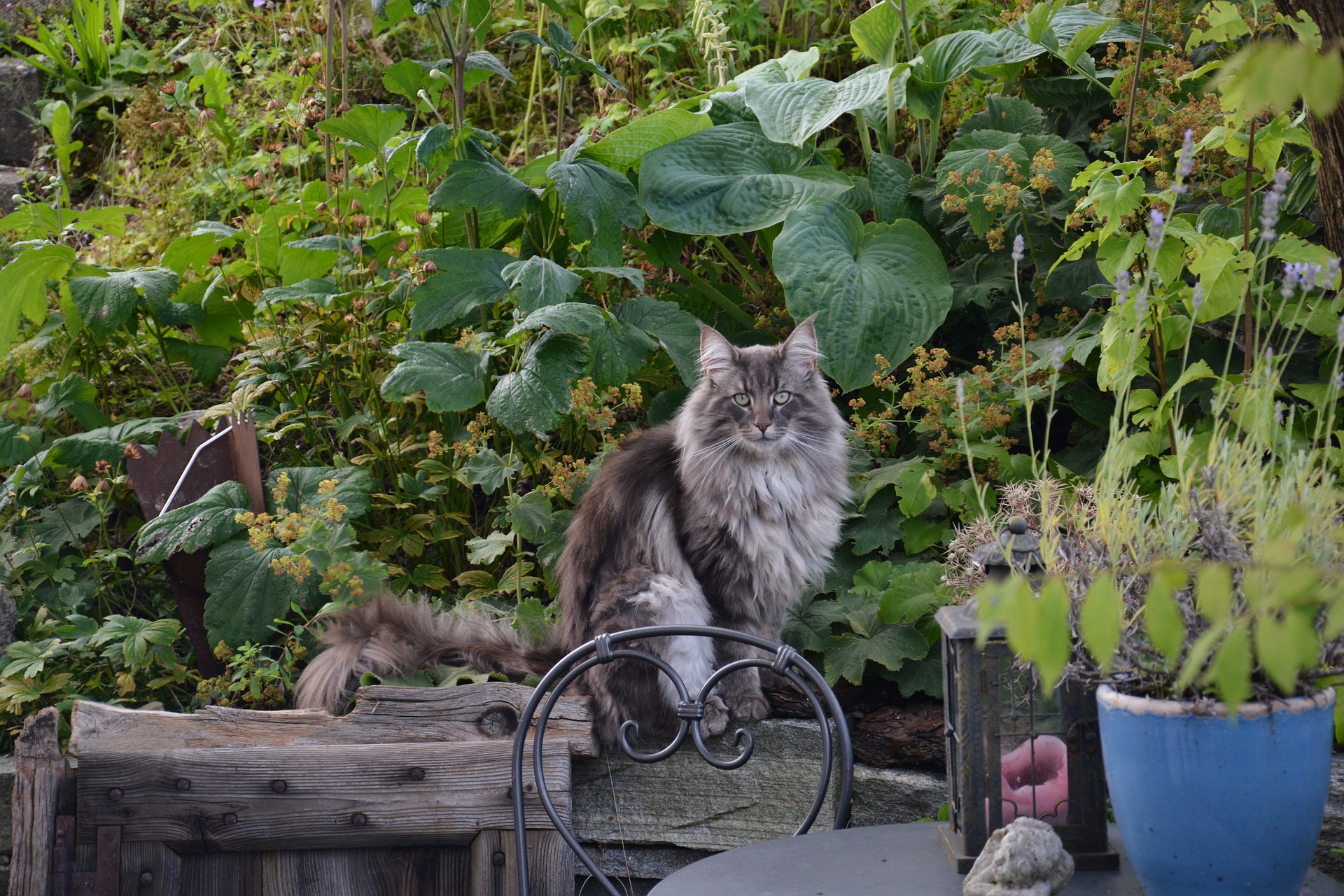Some of The Largest Domestic Cat Breed we know and love to cuddle today are all historically descended from some African wildcats, and over the course of millennia, These cats have spread to all corners of the globe, also, they established themselves into distinctive breed subsections and categories as a result.
Consequently, different breeds and types of cats all appear significantly different from each other and have their own unique traits of appearance and personality that are considered to be signatures of the breed. One of those traits is build and size, and you may be wondering which breeds of domestic cats are the feline giants, or the largest domestic cats commonly kept as pets today.
Table of Contents
Largest Domestic Cat Breed: 3 listed breeds
1. Norwegian Forest Cat

Introduction
One of the largest domestic cat breeds we are talking about is The Norwegian Forest Cat has a charming personality that matches their stunning looks.
For hundreds of years, these cats have been around and always been highly prized in their native Norway for being a hardy natural breed capable of surviving harsh climates and cold temperatures. They are large cats that take a long time to fully mature which means they remain very kitten-like for a number of years. The Wedgie as they affectionately nicknamed has found a big fan base not only in their native land but in many other countries too thanks to their stunning looks and kind gentle natures.
History
The Norwegian Forest Cat is an ancient breed and one that’s thought to have traveled with their Viking owners when they sailed the seas. Their job was to control vermin on ships and they earned themselves the reputation of being extremely good ratters. They are a real natural breed and although the exact origins of the breed remain unknown, there are many legends of similar looking cats having been kept as pets in Scandinavia as far back as the 16th century.
Over the centuries the Wedgie remained a highly prized cat in their native Norway where local folklore described them as being “Fairy Cats”. Unlike many other breeds, the NFC is fond of playing in the water and is very capable of catching fish both in streams and lakes which led to many tales being told in ancient times of these extraordinary longhaired cats.
Today, the Norwegian Forest Cat is one of the most natural breeds on our planet thanks to the fact they have only been bred through natural selection. They are also known to be one of the most robust breeds with their dense, extremely waterproof coats providing them with a tremendous amount of protection against the elements. They have always been popular in their native Norway and other Scandinavian countries, although at the beginning of the 20th century their breed numbers were seen to fall dangerously low to the point where this beautiful creature nearly vanished altogether.
Fortunately, during the 1930s breeders started to save the breed although World War II had an impact on their work. It was not until the 1970s that a breeding program was established in order to save these charming cats. It was at this time that the Norwegian Forest Cat became Norway’s national feline, it has been awarded royal recognition by King Olaf. Today, the NFC remains a popular companion and family pet thanks to their kind and gentle natures.
Appearance
The Norwegian Forest Cat is a large feline and she is a natural hunter. They have extremely water resistant not so long coats with a very dense undercoat which help cats cope with the harsher, colder conditions often seen in their native Norway. Their coats are a lot denser during the cooler winter months, but quite a bit shorter and less thick in the summertime.
They have large heads that are triangular shaped and when seen in profile, a cat’s nose is straight and long. Their eyes are large and almond-shaped being set obliquely at an angle with cats always having a kind, gentle expression in them. Ears are large being wider at the base and arching forwards which gives them a very similar look to that of a Maine Coon. Their ears are extremely well furnished which adds to their wild look. They have strong, robust bodies and powerful legs with tidy, rounded feet. Tails are long and well covered in hair that flows beautifully when cats move.
When it comes to their coat, the Norwegian Forest Cat boasts having a semi-long top coat and a dense, close-lying undercoat that offers them a tremendous amount of protection from the elements. They come in all colors with the exception of the following under the GCCF breed standard:
Chocolate
Lilac
Cinnamon
Fawn
Siamese
Temperament
This largest domestic cat breed boasts having a sweet, kind and gentle nature which matches their stunning looks. They mature slowly which can take up to five years which means they retain many of their kitten-like traits for that much longer than many other breeds. They are intelligent and thrive on being around people. As such, they are best suited to households where at least one person stays at home when everyone else is out of the house.
The Norwegian Forest Cat forms strong ties with their families, but unlike many other breeds, they don’t mind being left on their own as long as it is not for too long.
Also, They tend to be a little shy around people they don’t know, but once they get to know a person, they are much more relaxed around them. They are not overly talkative and have quiet voices, however, NFCs are always quick to let an owner know when it’s meal time when they can be a lot more vocal albeit quietly.
Norwegian Forest Cat always enjoys being involved in everything that goes on in their environment and she is a natural hunter, Wegies love being allowed to explore the great outdoors. As such, they are the perfect choice for people who live in a country where it is safe to let a cat roam outside. They also love to climb up high and for such large cats, they are remarkably agile and able to reach great heights. Once upon a perch, she loves to look down on things below.
Intelligence
As previously mentioned, the Norwegian Forest Cat is known to be a highly intelligent cat and one that adapts well to their environment. They learn things quickly and enjoy playing interactive games which include things like “fetch”. Being so smart, it’s important for NFCs to have lots of mental stimulation and as such, they are best suited to people who live in a country environment where it is safer for a cat to roam around in the great outdoors so they can indulge their passion for hunting.
2. Chausie

Introduction
In 1990 by crossing a Jungle Cat with a domestic cat, this one had been created, after which time, the breeders concentrated on producing a “wild” looking cat that boasted a kind, placid and affectionate nature. The breed was awarded full Championship status by TICA in 2013 but has yet to be recognized by the Governing Council of the Cat Fancy (GCCF). The breed’s name “Chausie” is derived from the Jungle Cat’s Latin name which is Felis chaus and since these large, handsome cats first appeared on the scene, they have found a fan base in many countries of the world including in the UK.
History
By crossing a Jungle Cat with a domestic cat we got The Chausie was first bred in France. The breeder’s end goal was to create a kind, affectionate, domesticated cat that boasted having the traits and physical characteristics of a Jungle Cat. Breeders succeeded in producing large, handsome cats that boasted kind and placid natures and since the breed first appeared on the scene, breeders in other countries of the world have started producing healthy examples of the Chausie.
The Jungle Cat is native to the Nile Valley but is also found in other parts of the world which includes South Asia. These cats were revered by the Ancient Egyptians and mummified remains of Jungle Cats have been discovered in Pharaoh’s tombs having been buried with their owners so they could accompany them into the “afterlife”.
It is thought that Jungle Cats often mated with domestic cats and over the centuries hybrid cats have been reported in many countries of the world including North America, Southeast Asia, and India, but it was only in the nineties that European breeders began a breeding program to produce healthy, handsome and large cats by crossing Jungle Cats with domestic cats. TICA awarded the Chausie full Championship status in 2015, but for the moment (December 2016) the breed is not recognized by the GCCF.
Appearance
this largest domestic cat breed was bred to keep this physical characteristic of the Jungle Cat. They are medium to large in size with long legs and bodies. Their heads are a modified wedge shape and when seen from the front, they have a nice width with lovely high, long cheekbones. They have long muzzles which adds balance to their cheekbones. Their muzzles are nicely contoured with cats having full chins and puffy nose leathers, it really adds to their wild appearance.
She has small to medium-sized eyes with the bottom half being oval and which slant to the outer base of a cat’s ears. The top part of the eye is a lot flatter, but still a nice half oval shape. Eye color can be gold or yellow with some cats having light green or hazel eyes. When seen in profile, a Chausie has a sloping forehead and their noses rise towards the tip which forms a slight bump just above a cat’s nose leather. They have large, upright, tall ears that are set at a slight angle on the top of a cat’s head. Ears are quite wide from the base to the tip and they have tufts on the tips of their ears, although some cats do not.
The Chausie has a moderately long and thick neck, it certenlly adds to their graceful appearance. They have long, lean bodies and deep chests. Their legs are long showing a moderate amount of bone and their feet are medium in size and oval-shaped. Tails are quite short and moderately wide tapering slightly to the tip.
When it comes to their coat, the Chausie boasts having a short to medium length coat with the length being long enough so that two bands of ticking appear in their coats. Their coats are dense having a soft undercoat and slightly harsher topcoat. Black coated cats often have softer coats to the touch whereas black grizzled coated cats often have coarser coats. Chausies come in a variety of colors which are as follows:
Brown Ticked Tabby – a cat’s coat is mouse grey nearer the skin with a sandy grey or reddish gold base color. Cats have two or three bands of darker ticking in their coats and tails, upper inside of the legs and hocks on back legs are nicely barred. Their necks can have necklaces or not and there should be a thumbprint on each of a cat’s ears that are lighter in color. Eyes and muzzles are nicely outlined with an off-white color. This largest domestic cat breed underbellies can be sometimes off white to sandy gold with a little flecking or speckling being allowed on their bellies.
Black – cats have a solid black coat
Temperament
Like other breeds, the Chausie likes a routine and doesn’t like it when this changes for any reason. feed them at the same time of the day and note that they don’t appreciate it when furniture gets moved around the home which can often stress cats out. With this said, Chausies are quite laid back by nature although they are energetic and like to be kept busy when they are not snoozing that is. They thrive on human company and don’t like being left on their own for any length of time. As such, these active, intelligent cats are best suited to families where at least one person stays at home when everyone else is out of the house.
Chausies is known to be good-natured and affectionate cats that love interacting with their owners and are particularly fond of playing games like fetch which they are very skilled at. They form extremely strong bonds with their owners and can be taught to wear a harness and be taken for a walk on a lead much like their canine counterparts.
Chausies will always be very playful right through their lives which is just one of the reasons they are such a pleasure to share a home with.
Intelligence
This largest domestic cat breed is a highly intelligent cat and one that needs to be given a ton of stimulation to keep them happy. most owners opt to keep them as indoor pets because they are valuable cats that like to roam, also they provide a Chausie the right amount of company and things to keep them busy, they adapt well with being kept as indoor cats. They learn new things very quickly and can be taught to wear a harness and walk on a lead just like their canine counterparts.
3. The American Bobtail

Introduction
This largest domestic cat breed is a relatively new breed originating in the USA in the 1960s, though not receiving much publicity until relatively recently. It is rarely seen in the UK as it is not recognized by the Governing Council of the Cat Fancy (GCCF) and therefore cannot be shown at GCCF shows.
It can be either a shorthaired or semi-longhaired variety and is distinguishable by its shorter length tail, which is between a third and a half the length of that of a more conventional breed.
As the length of the tail is not a programmable gene and cannot be bred specifically to order, it is said that no two tails are ever the same, and unlike other cats, she will often wag its tail to show pleasure.
The longhaired variety is described as having a shaggy-looking coat (rather than dense or fluffy) as befits the connection to wild bobcats from whom they are thought to descend, whereas the shorthaired American Bobtails have rather plush coats, This is a sturdy, rather rugged looking cat, and both of the varieties are medium to large in size, with males weighing around 15lb, and females a little smaller.
History
The early history of this largest domestic cat breed is consistently recorded. In the late 1960s, a young American couple, John and Brenda Sanders of Iowa, were on holiday near an Indian reservation in Arizona when they found a stray short-tailed brown tabby kitten, the one they adopted and took back home to Iowa with them. They named the kitten Yodie, and although his parentage was unknown, he was thought to be a bobcat/domestic cat hybrid because of his short stubby tail.
In due course he was mated with a color-pointed non-pedigree shorthaired female cat (with normal tail length) called Mishi, belonging to the couple. When the kittens arrived, they too had Yodie’s distinctive short tail, and a friend of the Sanders, Mindy Schultz, saw the potential for a new breed of cat and by mating several of the female kittens to a pedigree longhaired male colorpoint, the first American Bobtails were born.
Later on, Birmans, Himalayans and a Himalayan/Siamese cross (all colourpointed varieties of a cat) were added to the breeding program, and the first provisional Standard of Points for this new breed was written by Mindy Schultz (as the first recognized American Bobtail breeder) in the early 1970s. However, the early days of the American Bobtail resulted in a great deal of inbreeding and the subsequent problems that it can bring, and so in the 1980s, a group of breeders devised a new breeding program.
They went away from their early lines which had a long coat, white mittens, and a white face blaze, and the cat that is recognized today as an American Bobtail was recognized in the USA by The International Cat Association (TICA) in 1989 and by the Cat Fanciers’ Association (CFA) in 2000.
Appearance
Since the original lines were phased out due to problems with inbreeding from a very small gene pool, there is now a conscious effort to produce this largest domestic cat breed that resembles the wild bobcat in physical appearance, with a friendlier, more domestic temperament, also they are very athletic-looking cats with a sturdy frame.
The American Bobtail comes in many recognized colors and patterns, and although out-crossing to other recognized breeds is no longer permitted they are mated with domestic non-pedigree shorthairs to increase the gene pool, but that wasn’t to bobcats or other feral cats.
Colors include black, brown, chocolate, cinnamon, blue, lilac, fawn red and sometimes cream, and patterns can include various tortie (in the females), shaded, tipped and tabby patterns. Any color eyes are acceptable, usually relating to the coat color, and are almond in shape.
The ears are of medium size with rounded tips, and set in a position midway between the top and the side of the head, adding to the overall picture of a medium wedge-shaped head. The tail should stop just below the level of the hocks when hanging down, and their feet are large and round, quite often with toe tufts of hair. This breed is slow to mature, sometimes taking as long as three years to reach full maturity.
Temperament
These beautiful cats make excellent family pets, getting on well with children and other pets. They become devoted to their owners, often attaching themselves to one particular family member singled out to be the favorite, and although they love to play, and will often retrieve objects thrown for them, they are not demanding in the way that some of the Oriental breeds are, and often greet their owners, but with quite a gentle voice compared to many other breeds.
This is a very intelligent breed, with an alert expression as might be expected for cats with ancestry that has had to fend for itself way back in the past.
You also may want to read about The Most Common Cat Breeds And Why We Love Them

